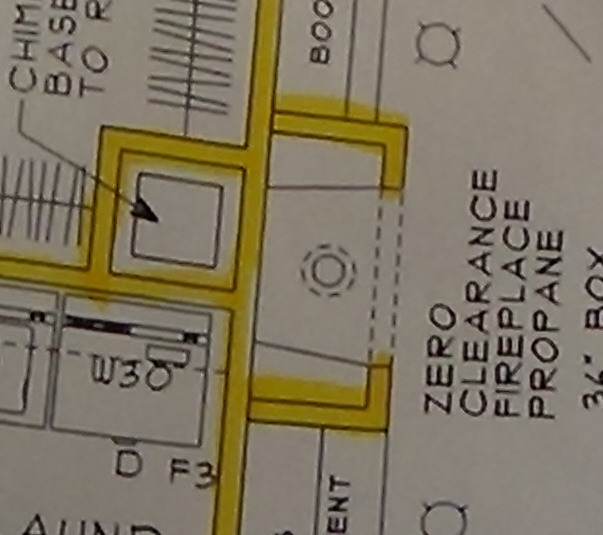Our current LP gas fireplace is vented up a chimney chase in a flue that is not an all-fuel triple wall chimney system. As a result our LP gas fireplace (I'm told) has to have a glass cover over the firebox.
My wife wants to be able to eliminate the glass front and install a natural gas fireplace. I've been told that to do this you need to either vent it up a masonry fireplace or replace the existing chimney system with a triple wall pipe that can contain the heat in an enclosed chimney chase.
Several questions:
What do you call gas fireplaces that can be so installed, if they are neither direct vent or vent free?
I've been told that (by nation fire code?) the triple wall chimneys can't make a sharp right turn. Can they make a 45 degree turn followed by a short length of straight pipe, and then another 45 degree turn? Where do I read up on this.
Knowing the right name of the fireplace insert that would serve my needs would really help ...
TIA ...
Edit: More searching and I've seen the term "open fronted" applied to the old wood burning fireplaces we've been accustomed to. For the wife, it's all about aesthetic qualities ...
Edit: More help here http://www.bobvila.com/articles/2051-gas-fireplaces-101/
Natural vent, often called 'B vent', utilizes an existing masonry chimney or a factory-built metal chimney. Room air exhausts combustion by-products to the outside via a flexible liner or single pipe installed within the chimney.
Direct-vent fireplaces draw in outdoor air for combustion, then expel spent air to the outside through a dual (co-linear) venting system, eliminating the heat loss associated with conventional chimneys, according to technicians at Majestic Fireplaces. They can be vented up through the roof or out to the side or back of a house; a perfect solution for homes without an existing chimney. Direct-vent units must, however, have a sealed glass door to maintain proper combustion and ensure efficiency and indoor air quality.
Vent-free technology, once considered controversial, has now won wide acceptance. Robert Dischner, director of product development at Lennox Hearth Products states that "the fireplaces use catalytic-converter technology [similar to exhaust systems on new cars sold in the U.S.], which cleans hot air as it leaves the combustion chamber. Because of this technology, no chimney or venting is required." Further, he says, "their sleek look is much like a plasma television."
So another thing I'm now wondering is whether it would be possible to have an open fronted fireplace that draws combustion air not from the room, but outside or some heated space? The Heat-n-Glo 6000 TRLX doesn't do this, I'm pretty sure ...
My wife wants to be able to eliminate the glass front and install a natural gas fireplace. I've been told that to do this you need to either vent it up a masonry fireplace or replace the existing chimney system with a triple wall pipe that can contain the heat in an enclosed chimney chase.
Several questions:
What do you call gas fireplaces that can be so installed, if they are neither direct vent or vent free?
I've been told that (by nation fire code?) the triple wall chimneys can't make a sharp right turn. Can they make a 45 degree turn followed by a short length of straight pipe, and then another 45 degree turn? Where do I read up on this.
Knowing the right name of the fireplace insert that would serve my needs would really help ...
TIA ...
Edit: More searching and I've seen the term "open fronted" applied to the old wood burning fireplaces we've been accustomed to. For the wife, it's all about aesthetic qualities ...
Edit: More help here http://www.bobvila.com/articles/2051-gas-fireplaces-101/
Natural vent, often called 'B vent', utilizes an existing masonry chimney or a factory-built metal chimney. Room air exhausts combustion by-products to the outside via a flexible liner or single pipe installed within the chimney.
Direct-vent fireplaces draw in outdoor air for combustion, then expel spent air to the outside through a dual (co-linear) venting system, eliminating the heat loss associated with conventional chimneys, according to technicians at Majestic Fireplaces. They can be vented up through the roof or out to the side or back of a house; a perfect solution for homes without an existing chimney. Direct-vent units must, however, have a sealed glass door to maintain proper combustion and ensure efficiency and indoor air quality.
Vent-free technology, once considered controversial, has now won wide acceptance. Robert Dischner, director of product development at Lennox Hearth Products states that "the fireplaces use catalytic-converter technology [similar to exhaust systems on new cars sold in the U.S.], which cleans hot air as it leaves the combustion chamber. Because of this technology, no chimney or venting is required." Further, he says, "their sleek look is much like a plasma television."
So another thing I'm now wondering is whether it would be possible to have an open fronted fireplace that draws combustion air not from the room, but outside or some heated space? The Heat-n-Glo 6000 TRLX doesn't do this, I'm pretty sure ...
Last edited:



